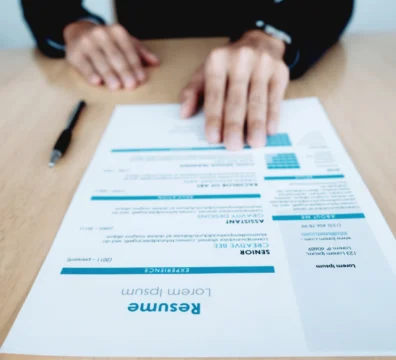Have you ever wondered what makes Google stand out of the crowd? It is mainly because of the talents working behind the scenes. The contributions of an employee towards the company assist in improving their productivity and overall performance.
Therefore, your organisational success and growth hinge upon your ability to attract and retain top talents. This makes building a talent acquisition team more essential than ever. But how do you build such teams in your organisation? Let’s go through a few tips as shared in the blog.
What is a Talent Acquisition Recruiter?
Firstly, let us understand what talent acquisition is before building a talent acquisition team in your company. It refers to identifying and acquiring talents that meet your organisational needs. As we know, a talented team has the potential to make a successful organisation. However, these people don’t typically come knocking at your door, but you must proactively acquire them.
A talent acquisition recruiter first identifies the skills, experience, and qualities required for fulfilling a specific role. Then, they start identifying and attracting potential talents possessing those attributes for your company.
One question that mainly arises here is, “Is talent acquisition part of HR”? The answer is “Yes,” but it has separate objectives and methodologies.
One of the significant reasons for talent acquisition is competition in the labour market. According to an EY survey in 2023, nearly 34% of employees are willing to switch jobs in the next 12 months. This makes talent acquisition a vital process such that you stay prepared before any of your employees leave their positions in the future.
What does the Talent Acquisition Team do?
Are you still confused about the responsibilities of a talent acquisition team? Let’s find out some of their key responsibilities.
- Conducting market research to stay updated on the trends and job market shifts
- Creating comprehensive and accurate job descriptions to attract suitable candidates
- Identifying potential candidates that align with the job requirements and company culture
- Managing the entire interview and hiring process and continuously updating candidates with feedback and other details
- Optimises talent acquisition strategies to attract and retain top talents
- Attract high-quality candidates and develop effective employer branding strategies.
- Offering an exceptional candidate experience throughout the recruitment process
- Enhance your company’s diversity and inclusion initiatives and minimise unconscious biases in recruitment.
- Facilities succession planning that ensures a pipeline of qualified candidates to replace employees when they leave your company
Examples of Building a Talent Acquisition Team
Here are two examples of building a talent acquisition team.
In a Large Corporation
Having more experienced people on the recruitment team is essential for talent acquisition for large corporations. This includes:
- Talent Acquisition Director
- Recruiters (divided into teams depending on business units or specialised roles)
- Sourcers (dedicated team or embedded one in each recruiter team)
- Recruitment Coordinators (centralised support for all teams)
- Employer Branding Specialist (promote company’s brand and values)
- Talent Acquisition Analysts (focused on data analysis and reporting)
In a Startup
The talent acquisition team for a startup is usually lean and agile. The team comprises of
- Talent Acquisition Manager (Oversees the recruitment process)
- Full-Cycle Recruiters ( end-to-end hiring)
- Recruitment Coordinator (administrative support)
- Employer Branding Specialist (attract top talent)
- Talent Acquisition Analyst (data analysis and optimisation)
Step-by-Step Process of Building a Talent Acquisition Team
The talent acquisition process starts with sources providing a consistent flow of candidates to junior recruiters for initial screening. These selected candidates are later passed on to senior recruiters for connecting with them.
Next, recruiting coordinators schedule interviews, and talent acquisition managers negotiate salaries and choose candidates. This is a dream talent acquisition team that can help you choose the best of the best candidates in the company. However, it may not be the same for businesses of all sizes, mainly due to financial concerns and business requirements.
We have listed seven steps to consider while building a talent acquisition team in your company.
Understand Your Talent Requirements
Before building a team, you must assess your organisation’s talent requirements. This includes identifying the skills, qualities, competencies, and experience needed to fulfil your company’s different roles. Doing so lets you understand your skill gaps and determine what kind of people you need to attract and hire.
Set Team Goals
You must establish clear talent acquisition team goals whenever you attract and hire talent. These goals and objectives guide your team in fulfilling their tasks and ensuring alignment with the organisation’s overall recruitment strategy.
However, while setting goals and objectives, you must consider certain factors like hiring timelines, DEI initiatives, quality of hires, etc.
Determine Your Talent Acquisition Team Structure and Roles
While building a talent acquisition team, you must create a well-defined structure and set responsibilities for each member. In this case, you can use different templates to clarify your expectations from the members and facilitate effective team collaborations.
Documenting the tasks, skills, and key responsibilities for each role promotes clarity and accountability within the team.
Develop and Implement Recruitment Processes
Hiring talents for their skills, knowledge, and experience is essential. Therefore, you must develop an efficient hiring process for your team. It includes well-written job descriptions, use of interview templates, and preset evaluation criteria.
In addition to that, you can implement an applicant tracking system to manage your applicant data effectively. These systems allow you to choose candidates without entertainment biases and limitations.
Recruiting Team Members
Once you clearly understand the team structure, you must focus on recruiting talented people. Use the aforementioned recruitment processes to choose candidates aligning with your organisation’s culture and values. Your recruitment process must promote diversity and inclusivity in recruiting staff that further improves brand reputation and attracts top talents.
Leverage Tech and Data
Now that you want to enhance your talent acquisition efforts, leveraging technology and data is essential. For example, you can use an ATS (applicant tracking system) and analytics tools to streamline recruitment. It also improves your candidate selection and helps measure your recruitment strategy’s effectiveness.
In recent research, nearly 63% of HR managers and talent acquisition specialists said AI has positively impacted their company recruitment. These statistics depict how essential implementing tech is in recruiting your team members. Furthermore, leveraging data helps you identify trends, optimise different sourcing channels, and make better data-driven decisions.
Upskill Your Team
Once you have selected your team members, you must invest in their continuous learning and development. For example, you must train team members on sourcing techniques, interviewing skills, understanding diversity and inclusion, etc. When you encourage knowledge sharing and team collaboration, they foster growth and innovation in your company.
How 6 Pence Helps
Building a talent acquisition team is vital for recruiters to source and hire top talents. They are the real drivers of your corporate culture and ensure long-term growth. You can use this guide to start hiring top candidates for your talent acquisition team.
If your company lacks the resources to build and hire a talent acquisition team, that doesn’t mean you have to settle for mediocre talents. Connect with 6 Pence. We are one of the leading staff outsourcing agency in the GCC and are operational in Oman, Iraq, Dubai, and Bahrain.
We help companies find highly qualified candidates and can assist right from placing advertisements to helping with hiring and payroll processing.
To know about what we offer you and get a quote, connect with us today!
Frequently Asked Questions
How do you strategise talent acquisition?
There are numerous ways to strategise the talent acquisition process in a company. However, all these strategies must align with business goals. You can use data and marketing strategies to create better acquisition methods. However, the primary strategy includes sourcing, attracting, and acquiring top talents who fit the organisational culture and fulfil long-term goals.
What are the responsibilities of the talent acquisition team?
The responsibilities of such a team include identifying, acquiring, assessing, and hiring top talents to fill up your talent pipeline or an immediate vacancy.
What is the talent team strategy?
The talent team strategy is a planned method of helping organisations recruit, develop, and retain top talents and plan for future needs and skill gaps beforehand.




































































































